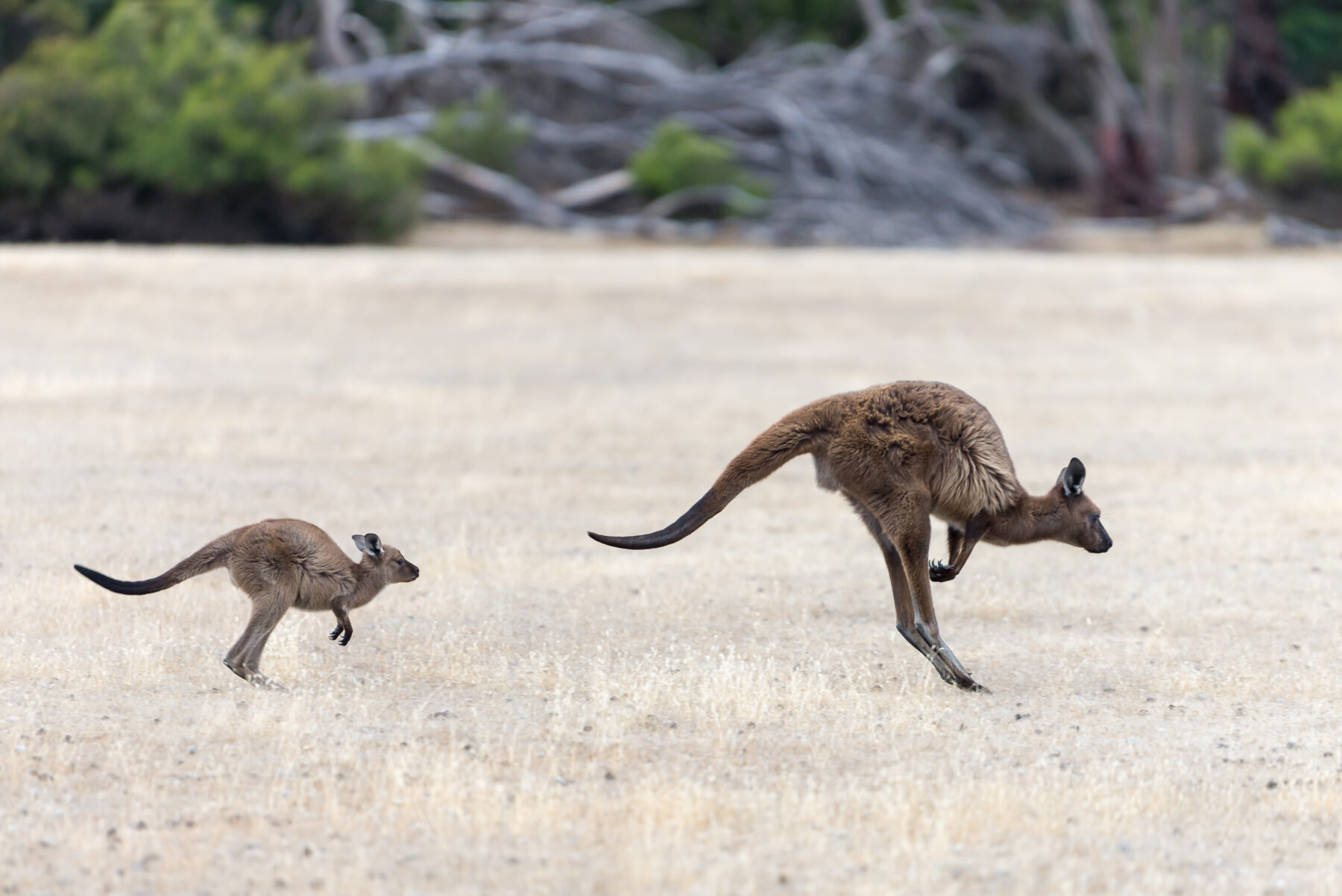Kangaroos use tail like a leg to walk

Kangaroo tails are much more powerful and have a much greater involvement in slow movement than previously thought, according to a new study.
Rather than acting as a balance strut when a kangaroo is moving slowly, its tail actually behaves more like a third leg, pushing the kangaroo forward as part of a three-stage walk.
Long-time kangaroo ecologist and lead author Dr Terry Dawson, from the University of New South Wales, wasn’t surprised to find that the tail plays a significant part of non-bounding kangaroo movement.
However, what was new to him was that the propulsive force of a kangaroo tail was equal to that of its front and hind legs combined.
“The forward legs don’t actually provide any propulsion; they’re the ones that act as a strut,” says Terry.
Roos take it in their stride
When moving slowly, kangaroos plant first their front legs and then their tail on the ground and push forward with their tail before the hind legs come onto play.
To determine the tail’s role in this ‘pentapedal’ or tail-assisted gait, the researchers used video work and treadmills to measure the force the tail was using.
They found the tail generates almost exclusively forward-moving mechanical power, performing as much work a human leg walking at the same speed.
“Other mammals use [their tails] for all sorts of things: prehensile, climbing, some of them for support,” says Terry. “But as far as we know this is the only [mammal] that’s developed it into a major part of their locomotion.”

Bush mechanics of the kangaroo
“When I first started working on them, we thought they were quite primitive. But, actually we’ve found kangaroos are actually uniquely hardy – they’ve survived megafauna, changes in climate and human settlement,” says Terry.
“Kangaroos are one of the most athletic and strong, muscular animals that exist,” he adds. “They’ve got really great kidneys and very low water use; everything you look at just shows that they’ve had a very long evolution.”
“That solved a lot of problems in some fairly odd ways, but they’ve certainly solved them.”




